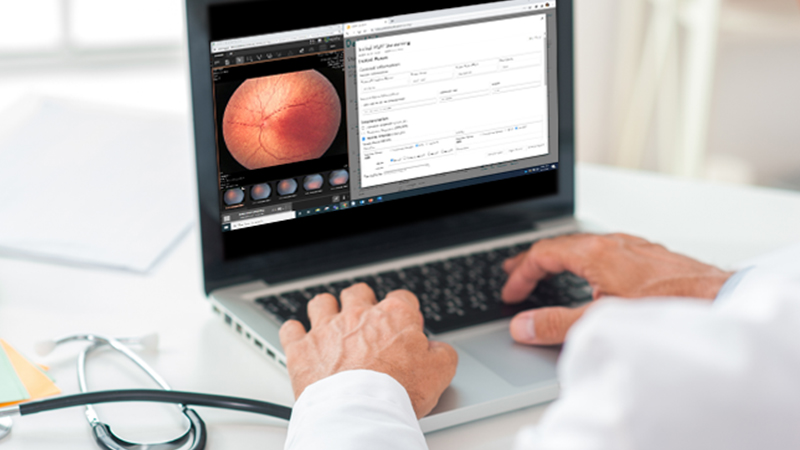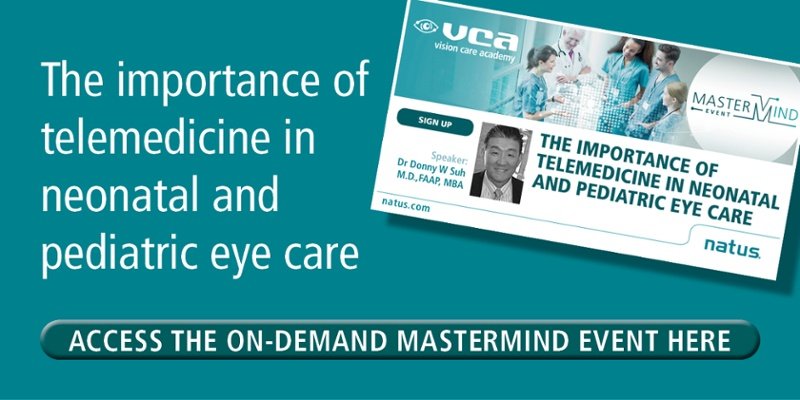Telemedicine is a relatively recent and promising development in healthcare, and its potential for neonatal care has grown over the past few years. Defining the term is complicated by the fact that ”telemedicine” and “telehealth” are often used interchangeably, though there is a subtle but crucial difference.
“Telehealth” refers to the range of technologies and services intended to improve how healthcare services are delivered. “Telemedicine,” on the other hand, is a specific type of telehealth; it is the range of technologies and services intended to improve healthcare delivery over a significant geographical distance.

One major benefit that telemedicine provides for neonatal patients is the quality of care made available from a remote location. For example, an ophthalmologist is required for an assessment of digital eye imaging to help identify special conditions, disorders or diseases of the eye. Direct access isn’t always available. Through telemedicine, the ophthalmologist can review these images remotely, offering a wide range of benefits for the patient, hospitals and medical care providers. The access to remote specialists is a major benefit for all parties involved.
One of the key areas in which telemedicine has much potential is in screening for retinopathy of prematurity (ROP), one of the leading causes of preventable childhood blindness. When medical professionals are able to capture quality retinal images within the appropriate window of time, telemedicine has been shown to be able to replace traditional ROP screening. Studies have shown that telemedicine even offers improved sensitivity and specificity compared to traditional methods1.
At its core, telemedicine increases timely access to appropriate treatment intervention and includes faster access to services that might not otherwise be available. There are even more benefits it can offer in neonatal care. Telemedicine can help reduce the risk of the spread of infections among babies and their healthcare counterparts. Babies are more susceptible to disease and illness. Telemedicine helps deter the spread of infections by reducing person-to-person contact.
In addition, telemedicine allows for more efficient screening. Currently, the list of babies that should have an ROP screening exam is generated using manually recorded data (spreadsheets, or sometimes even hard copies). With telemedicine, medical personnel are able to automatically generate this list using a cloud solution for, among other things, records of admission, discharge and transfer (ADT), gestational age and birth weight.
In situations where the demand placed on healthcare is higher, such as throughout the coronavirus pandemic, telemedicine has played a significant role in maximizing the patient experience. This description could just as easily apply to healthcare in more rural areas, where hospitals are more spread out and do not always provide as broad of a range of services as their urban counterparts.
In general, there are five ways in which telemedicine improves the patient experience:
If a hospital does not have a screening ophthalmologist available to examine a baby for ROP, that hospital will probably need to transfer the baby to another hospital and then transfer them back again. Transferring a baby from one hospital to another is estimated to cost $5,8004. In these situations, costs can add up quickly and feel painfully unnecessary. Telemedicine allows an ophthalmologist to review images remotely and avoid these transfer costs altogether.
Geographical boundaries are a common barrier for medical procedures, forcing expertise to stay within one boundary when it has the potential to help more patients. If telemedicine can be implemented at the national level, this can help to break down those barriers and will pave the way for cross-border services. Regional networks could also enable shared expertise. All this requires is strong team leadership, training, flexible and locally responsive services delivered at low cost, the use of simple technologies, within a clear legal and regulatory framework.5
Looking to learn more about optimizing the ROP screening process for neonates?
Studies have shown that ophthalmic imaging technologies enable ophthalmologists to remotely evaluate eye diseases with good specificity and sensitivity. In one neonatal intensive care unit in Montana, two medical doctors (MDs) performed a review of 582 telemedicine examinations of 137 infants over four years old, all of which made use of the RetCam ophthalmic imaging system.6 The images were securely transferred to a remote server to be evaluated by the remote ophthalmologist and any infant that was suspected of having ROP was transferred to a hospital that could administer immediate treatment.
The MDs concluded that telemedicine screening for ROP effectively detected patients in need of laser treatment, allowing prompt transfer with no poor outcomes over a 4.5 year period.
The key to getting started with telemedicine in ophthalmology lies in obtaining the appropriate medical devices. The single most important function you should enable for your hospital is computerized ophthalmic diagnostic imaging system which can be done through such devices/systems as RetCam.
For more information about RetCam ophthalmic imaging system, please have a look here…
References
1. https://www.reviewofophthalmology.com/article/telemedicine-for-rop-screening
2. https://mcpiqojournal.org/article/S2542-4548(20)30075-8/fulltext
4. https://www.eurotimes.org/telemedicine-for-rop/
5. https://pubmed.ncbi.nlm.nih.gov/22975018/
6. Weaver DR, Murdock TJ. Telemedicine detection of type 1 ROP in a distant neonatal intensive care unit. J AAPOS. 2012;16(3):229-33.
041440 RevA
